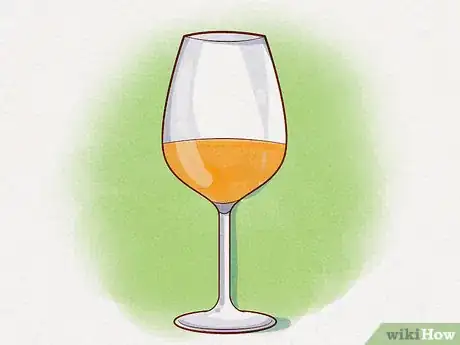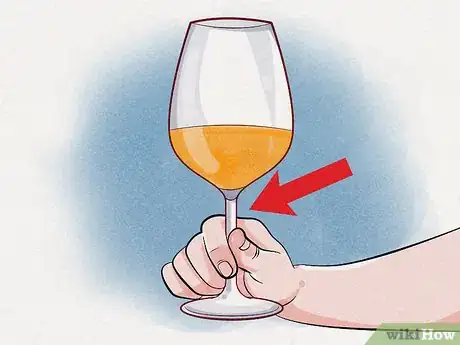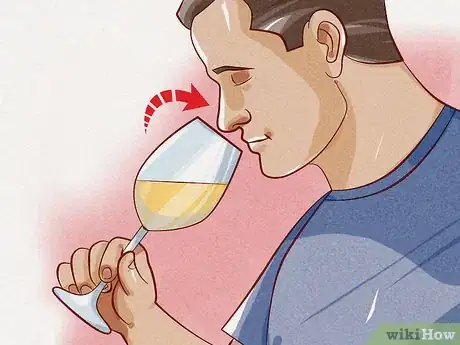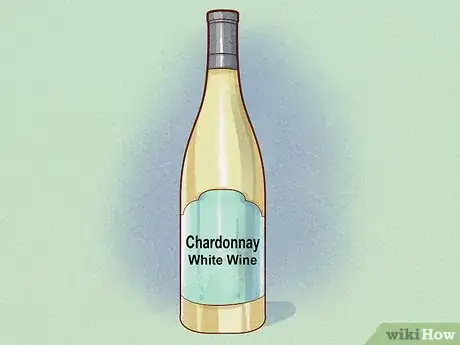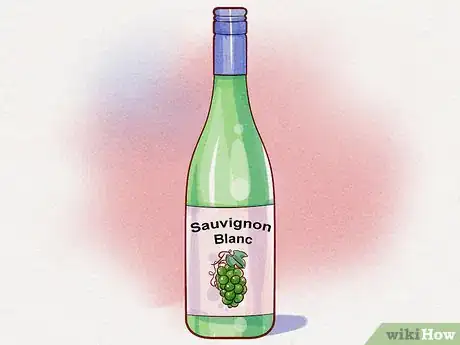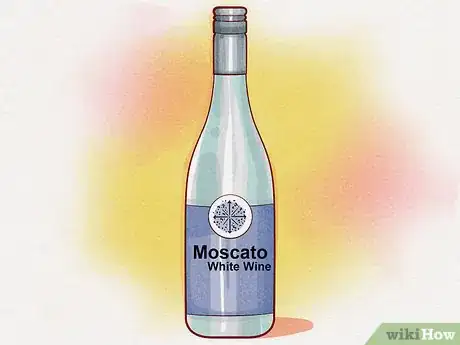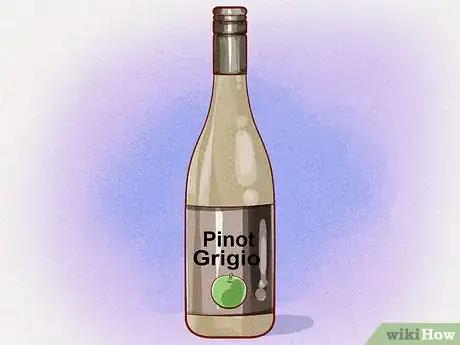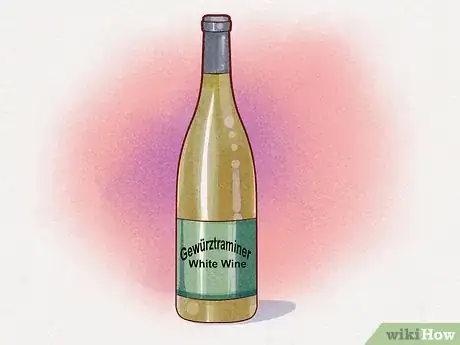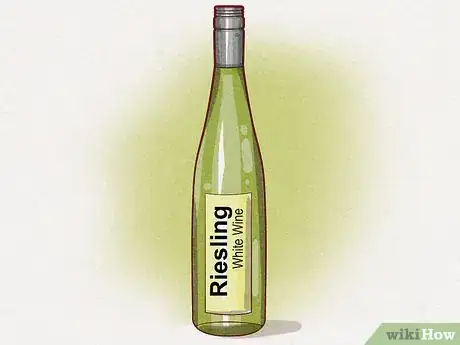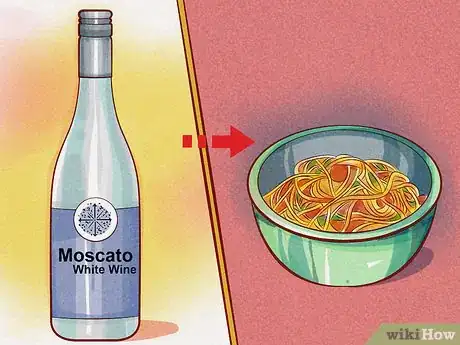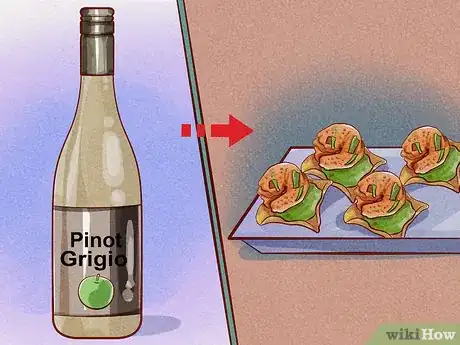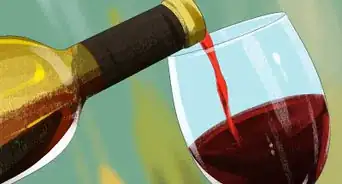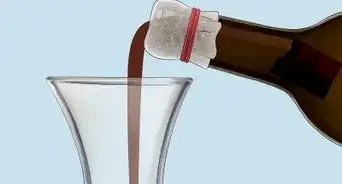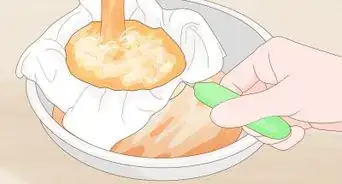This article was co-authored by Murphy Perng. Murphy Perng is a Wine Consultant and the Founder and Host of Matter of Wine, a business that produces educational wine events, including team-building experiences, networking events, and private parties. Based in Los Angeles, California, Murphy has served as a Wine Educator for clients such as Google, Buzzfeed, Tiktok, Snapchat, and Equinox and been featured on National Geographic and The Somm Journal. Murphy possesses her WSET (Wine & Spirit Education Trust) Level 3 Advanced Certification.
There are 9 references cited in this article, which can be found at the bottom of the page.
This article has been viewed 43,820 times.
Drinking white wine is a rich, flavorful experience. The different types of white wines have widely divergent flavor profiles that are delicious on their own or paired with different foods. This all may sound a little intimidating at first, but once you get the hang of the different white wine types, how best to serve and taste them, and what foods go best with each type, drinking white wine will become a much more rewarding experience for you!
Steps
Serving and Tasting White Wine
-
1Chill your white wine to 50 to 60 °F (10 to 16 °C) before serving it. The best way to get your wine to this temperature is to store it in the refrigerator after you buy it and leave it there for several hours. Conversely, if you need to serve it right away, leave your bottle in the freezer for about 30 minutes to do the trick![1]
- While this is the optimal temperature range for white wine, don’t worry too much about chilling your wine down to a specific temperature. Just getting your white wine down to “refrigerator temperature” should be enough to put it in this optimal range.
- If you do want to make sure your wine is 50 to 60 °F (10 to 16 °C) before serving it, use a bottle thermometer to gauge the wine’s temperature before you open it. You can buy one of these devices relatively cheaply online or in a winery.
-
2Drink your wine out of a white wine glass with a small bowl. This kind of glass is best for preserving the aroma of white wine, maintaining the wine’s optimal cool temperature, and expressing the acidity of wines like sauvignon blanc. However, if you can’t use a white wine glass, a standard wine glass will usually also work.[2]
- If you’re drinking a creamier white wine, like American chardonnay, a glass with a large bowl may actually do a better job of expressing that creamy texture.
Advertisement -
3Hold your glass by the stem to avoid heating the wine with your hands. You may not realize it, but holding the wine glass by the bowl inadvertently allows you to transfer the body heat in your hands into the wine.[3] If drinking white wine at the optimal cool temperature is important to you, make sure you always grip your glass by its stem.[4]
- Conversely, if your wine is too cold (which is possible), holding the glass by the bowl is a good way to let the wine heat up a bit before drinking it.
-
4Take some time to appreciate the appearance and aroma of the wine. Hold the glass up to the light to appreciate the wine’s color, or swirl the glass to see how much of the wine sticks to the glass. Before you drink it, lift the glass up to your nose and breathe in the scent of the wine. The experience of drinking white wine is as much about the look and smell of the wine as it is about the taste of it.[5]
- The primary aromas associated with wine are fruit flavors, herbal flavors, and floral flavors. When you smell your wine, see if it has a fruity smell like raspberries, an herbal aroma like mint, or a flowery smell like roses.
- Don’t feel discouraged if you don’t notice much about the wine’s smell at first. The more experience you have with different wines, the more you’ll learn to distinguish individual flavors and aromas.
- How much of the wine sticks to the glass when you swirl it indicates how rich and dense the wine is. The more wine that sticks to the glass, the bolder the alcohol content is.
- Swirling your wine around before drinking it will help open up some of the flavors.[6]
-
5Sip the wine and swish it around in your mouth before swallowing it. Let the wine cover your tongue to get the full experience of it in your mouth. Focus on both the taste of the wine, as well as it how feels on your tongue and on the sides of your mouth.[7]
- Take note of how the wine tastes, whether it’s sweet or sour, or if it tastes more like a tree fruit versus a citrus fruit. Pay attention as well to how warm the alcohol feels in your throat.
Choosing a White Wine
-
1Choose chardonnay for a classic, velvety white wine. Chardonnay is a very popular white wine and considered by many to be a sort of “standard” variety. They’re usually fruity, velvety, and full, though some regional varieties can be more creamy than others. Overall, chardonnays tend to be pretty light, making them a good choice for wine novices.[8]
- American chardonnay, for example, is usually much creamier and more “buttery” than French chardonnay.
-
2Go with sauvignon blanc for a dryer, tarter taste. Sauvignon blanc, like chardonnay, has some hints of fruit, but it’s a much more acidic variety of white wine. These fruity tones will be closer to grapefruit than anything else, but it’s still a bright and refreshing wine to try.[9]
- Sauvignon blancs are great if you want something light and sweet like chardonnay, but not overly sweet.
-
3Opt for moscato for a softer, more versatile white wine. Moscato is very fresh and light, meaning its sweet and soft when you drink it. Its versatility means you can pair it with almost anything, so it’s a good wine to choose if you want some white wine with your meal but don’t quite know what wine would go best with your food.[10]
- Moscato is just sweet enough that it can even be had with dessert!
- You can try moscato with a slice of panettone as dessert after dinner.
-
4Drink pinot grigio when you want strong fruity notes in your wine. Pinot grigio has a citrus-y taste, not unlike chardonnay and sauvignon blanc. However, the taste of pinot grigio is closer to green apples than grapefruit, making it less tart than sauvignon blanc but still crisp and sweet.[11]
- Pinot grigio is also pretty consistent across all regional varieties. This means you can have a pinot grigio from any vineyard in the world and expect it to taste pretty much the same.
-
5Try gewürztraminer for the ideal combination of dryness and sweetness. Gewürztraminer is a relatively sweet wine, but not so sweet that it can only be had with dessert. It’s a good choice of white wine for those who are fond of sweet drinks but who don’t want to go all in on a dessert wine.[12]
- Gewürztraminer also has an impressive mouth feel that will leave your tongue feeling pleasantly coated when you drink it.
-
6Have riesling when you want a sweet dessert wine. Riesling is probably the sweetest popular variety of white wine, making it very popular to have with or for dessert. Some regional varieties may feel more oily than others, but all types of riesling are consistently sweet, making it the ideal white wine to satisfy your sweet tooth.[13]
Pairing White Wine with Food
-
1Drink chardonnay with seafood in a rich sauce. This type of white wine is particularly good with fatty fish like salmon, or with seafood that is served in a lush, creamy sauce. It also goes well with dishes that have a strong umami flavor, like mushrooms.[14]
- If your chardonnay is particularly light, it may also go well with a light seafood dish like oysters.
-
2Drink moscato with fresh, crisp salad. The lightness of the salad complements the light, fresh flavor of most moscatos. However, you may also find that moscato works well when paired with a spicy food, so consider trying it the next time you go out for Thai food![15]
- Because moscato has a little bit of sweetness to it, some people also enjoy pairing it with their desserts.
-
3Combine sauvignon blanc with tangy seafood or cheeses. In contrast to creamy seafood dishes, try sauvignon blanc with a dish like scallops with grapefruit-onion salad to bring out its full flavor. Conversely, softer varieties of sauvignon blanc may pair better with cheese than seafood.[16]
- A soft sauvignon blanc also goes well with charcuterie boards.
-
4Have a glass of riesling or gewürztraminer with dessert. With the full sweetness of riesling, it’s hard to find a better pairing for this wine than a rich, sweet dessert dish. Try it with a fruity summer cobbler or a dish grounded in dark chocolate. If riesling is too sweet for your tastes, try a glass of gewürztraminer instead.[17]
- Much like moscato, the sweetness of riesling also makes it an interesting pairing with spicier cuisine.
- A general rule of thumb is that the dessert you eat should be just as sweet or sweeter than the dessert wine you're drinking.[18]
-
5Opt for pinot grigio with light seafood dishes. Pinot grigio usually works best when paired with seafood-based finger foods, like seafood tostada bites, as they seem to bring out the flavor of the seafood. This is especially the case if you’re drinking a light pinot grigio from Italy.[19]
- Pinot grigios with stronger fruit notes also tend to go well with salads.
Expert Q&A
Did you know you can get expert answers for this article?
Unlock expert answers by supporting wikiHow
-
QuestionWhat's the purpose of swirling wine around in the glass?
 Murphy PerngMurphy Perng is a Wine Consultant and the Founder and Host of Matter of Wine, a business that produces educational wine events, including team-building experiences, networking events, and private parties. Based in Los Angeles, California, Murphy has served as a Wine Educator for clients such as Google, Buzzfeed, Tiktok, Snapchat, and Equinox and been featured on National Geographic and The Somm Journal. Murphy possesses her WSET (Wine & Spirit Education Trust) Level 3 Advanced Certification.
Murphy PerngMurphy Perng is a Wine Consultant and the Founder and Host of Matter of Wine, a business that produces educational wine events, including team-building experiences, networking events, and private parties. Based in Los Angeles, California, Murphy has served as a Wine Educator for clients such as Google, Buzzfeed, Tiktok, Snapchat, and Equinox and been featured on National Geographic and The Somm Journal. Murphy possesses her WSET (Wine & Spirit Education Trust) Level 3 Advanced Certification.
Certified Wine Consultant
Warnings
- Never drink and drive or operate heavy machinery after drinking alcohol⧼thumbs_response⧽
- Always drink responsibly and within your own limits. If possible, drink with other people instead of drinking alone.⧼thumbs_response⧽
References
- ↑ https://vinepair.com/wine-101/right-temperature-serve-every-type-wine/
- ↑ https://winefolly.com/tutorial/the-importance-of-a-proper-wine-glass/
- ↑ Murphy Perng. Certified Wine Consultant. Expert Interview. 15 March 2019.
- ↑ https://www.marieclaire.com/food-cocktails/news/a16067/drinking-wine-faux-pas/
- ↑ https://winefolly.com/review/the-wine-tasting-method-video/
- ↑ Murphy Perng. Certified Wine Consultant. Expert Interview. 15 March 2019.
- ↑ https://winefolly.com/review/the-wine-tasting-method-video/
- ↑ https://www.thrillist.com/drink/nation/white-wine-types-explained#
- ↑ https://www.thrillist.com/drink/nation/white-wine-types-explained#
- ↑ https://www.thrillist.com/drink/nation/white-wine-types-explained#
- ↑ https://www.thrillist.com/drink/nation/white-wine-types-explained#
- ↑ https://www.thrillist.com/drink/nation/white-wine-types-explained#
- ↑ https://www.thrillist.com/drink/nation/white-wine-types-explained#
- ↑ https://www.foodandwine.com/slideshows/15-rules-great-wine-and-food-pairings#2
- ↑ https://www.thrillist.com/drink/nation/white-wine-types-explained#
- ↑ https://www.foodandwine.com/slideshows/15-rules-great-wine-and-food-pairings#5
- ↑ https://www.thrillist.com/drink/nation/white-wine-types-explained#
- ↑ Murphy Perng. Certified Wine Consultant. Expert Interview. 15 March 2019.
- ↑ https://www.foodandwine.com/slideshows/15-rules-great-wine-and-food-pairings#7

